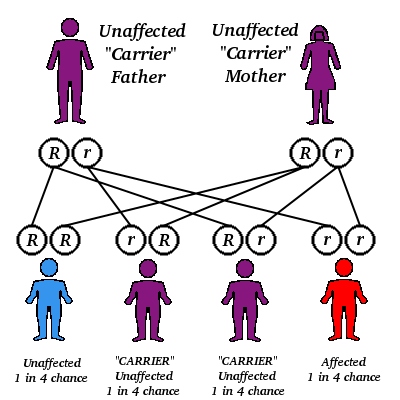Cancer plays an intimate role in the lives of Bloom's syndrome patients. From as early as childhood, cancers of all kinds strike repeatedly before stealing the victims' drastically shortened lives.
Although this inherited disease occurs with a scarcely detectable frequency-only 184 cases have been reported worldwide since the syndrome was recognized-scientists have longed to understand how the underlying genetic defect causes the numerous cancers that plague its sufferers and causes them to die, on average, before the age of 21.
Now, researchers from the New York Blood Center report that Bloom's syndrome arises from mutations in a gene, called blm, that is essential to the process by which chromosomes copy themselves. Their finding sheds light not only on this mysterious and obscure disorder but also on the generation of cancers through accumulated mutations.
"Basically, what happens in Bloom's syndrome is happening in all of us," says lead investigator James L. German. "It's just happening a lot faster."
Bloom's syndrome was first described in 1954 by dermatologist David Bloom, who noted a characteristic set of manifestations-normal body proportions but very short stature, a sun-sensitive rash on the face reminiscent of lupus, and a small, narrow head.
Bloom's syndrome is a recessive genetic disorder, so only a person who inherits a mutated copy of the gene from each parent suffers the disease. Though the mutation is vanishingly rare, it is somewhat more common among people of Ashkenazi Jewish descent. An estimated 1 in 100 Ashkenazi Jews carries one copy of the mutated gene.
In the 1960s, Bloom enlisted German's help to study the chromosomes of these patients. Bloom's patients have chromosomes-the paired DNA structures in a cell's nucleus-with an inordinate number of breaks. As a result, every time a cell divides, its DNA gets exchanged much more readily between chromosomes of a pair. Every break and DNA exchange offers an opportunity for a mutation to alter a vital gene.
German observed an elevated cancer rate and linked it to this high mutation frequency. But, unlike other cancer syndromes that promote a specific type of cancer, Bloom's syndrome increases the occurrence of "the generality of cancers," says German.
By studying the DNA of Bloom's patients who were born to first cousins, German determined that the blm gene is on chromosome 15. As German and his colleagues Nathan A. Ellis and Joanna Groden, who is now at the University of Cincinnati College of Medicine, report in the Nov. 17 Cell, Bloom's syndrome results from mutations in the gene needed to produce an enzyme classified as a DNA helicase. The enzyme helps uncoil double-stranded DNA and appears to be essential for maintaining chromosome stability.
"The fact that the distribution of cancers seen in Bloom's is similar to that found in the general population indicates that this gene may tell us something about cancer in general," says German.
Geneticist Stephen T. Warren of Emory University School of Medicine in Atlanta agrees that the finding may have implications beyond Bloom's patients. If mice could be made deficient in this enzyme, they might be susceptible to cancer, says Warren, "and could be exquisitely valuable in testing carcinogenic compounds."
Warren also notes that researchers could study carriers of blm to see if they are susceptible to more cancers than the general population.
German now plans to study how correctly functioning blm helps the chromosomes remain stable.
COPYRIGHT 1995 Science Service, Inc.
COPYRIGHT 2004 Gale Group



